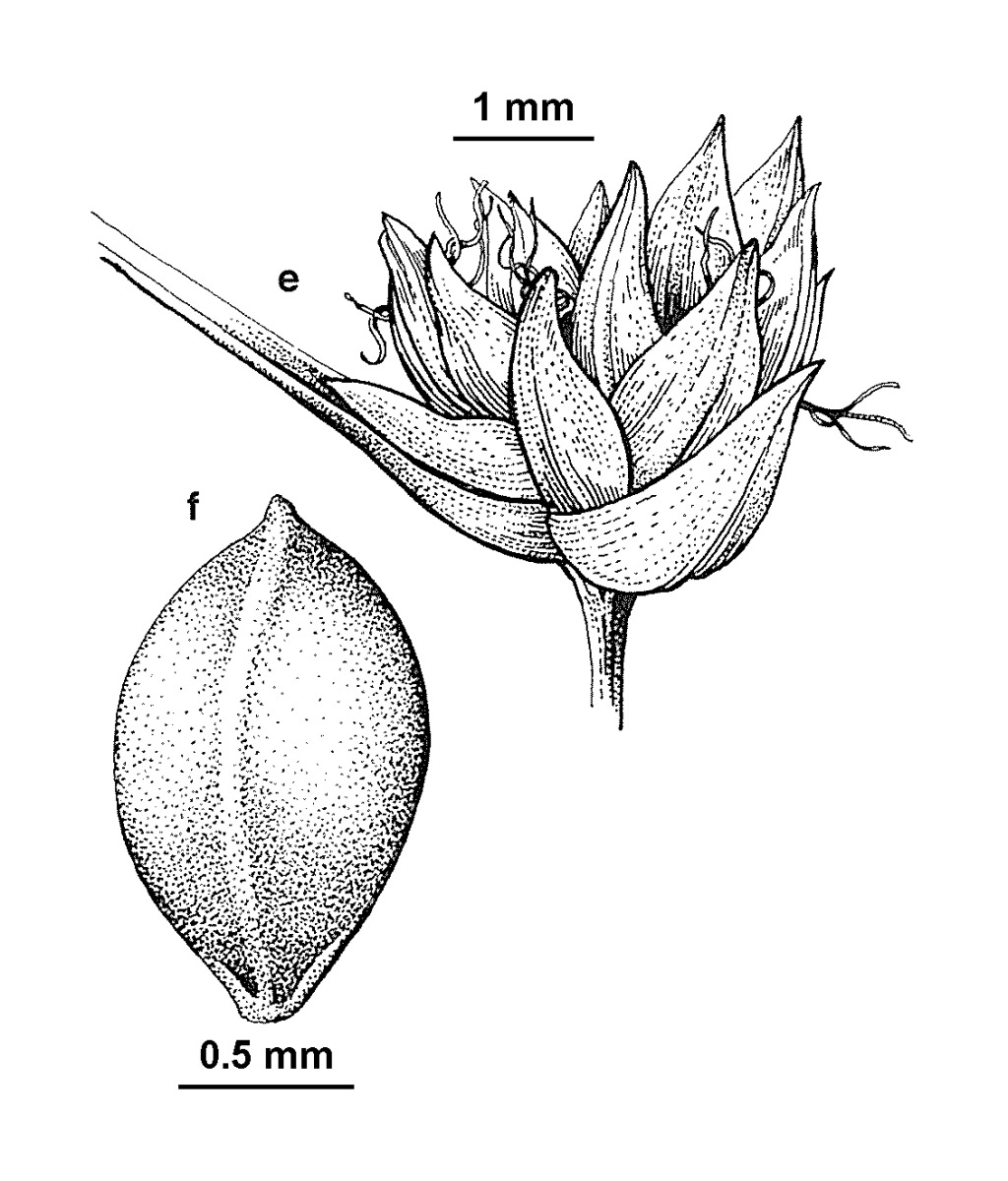Isolepis montivaga
(S.T.Blake) K.L.WilsonDensely tufted small perennial with short rhizome. Culms filiform, 0.5–4 cm high. Leaves longer than culms, blade to 6 cm long. Spikelets 1–3, ± hidden amongst leaves, 3–7 mm long; involucral bract to 3(–8) cm long, often as long as culm; glumes acute, not or scarcely mucronate, with the keel prominently thickened distally, sides faintly and irregularly several-nerved, whitish to straw-coloured, often flecked red-brown, 1.5–2.4 mm long; stamens 2 or 3 in lowermost flowers of a spikelet, 1 in upper; anthers 0.5–1 mm long; style 3-fid. Nut unequally trigonous, obovoid or ellipsoid, with angles not well-defined, minutely reticulate, shining, straw-coloured to grey-brown, from one-half to two-thirds as long as glume, 0.9–1.3 mm long, 0.5–0.8 mm diam. Flowers summer.
VRiv, CVU, EGU, HSF, HNF, MonT, VAlp. Also NSW, ACT, Tas. Occasional in alpine and subalpine areas, usually colonizing bare earth (track margins, drying pools etc).
Isolepis montivaga is recognised by the well-developed leaf blades, the involucral bracts which are usually very long relative to the culm, spikelet size and smooth nuts.
Wilson, K.L. (1994). Cyperaceae. In: Walsh, N.G.; Entwisle, T.J., Flora of Victoria Vol. 2, Ferns and Allied Plants, Conifers and Monocotyledons, pp. 238–356. Inkata Press, Melbourne.
 Spinning
Spinning
